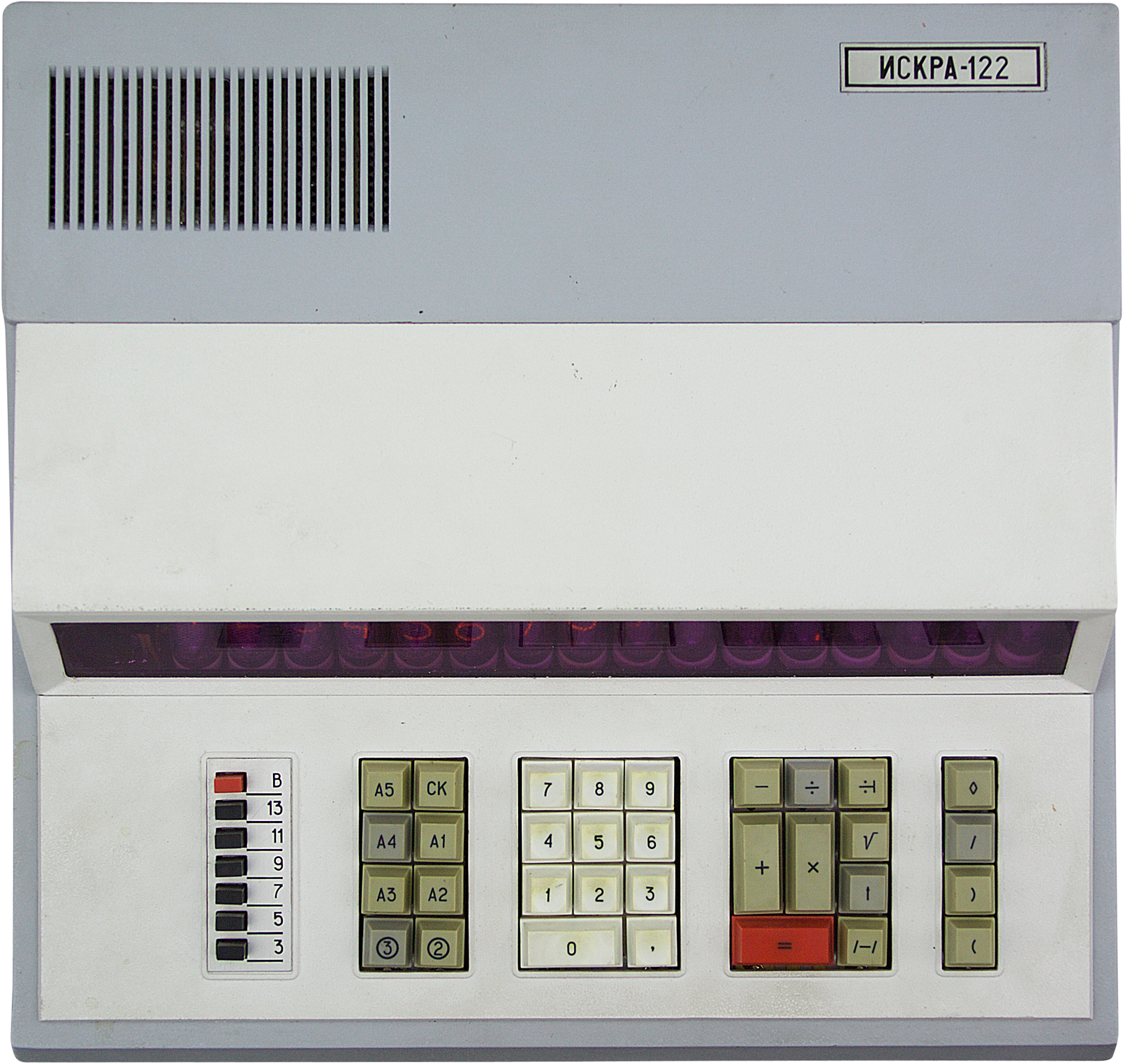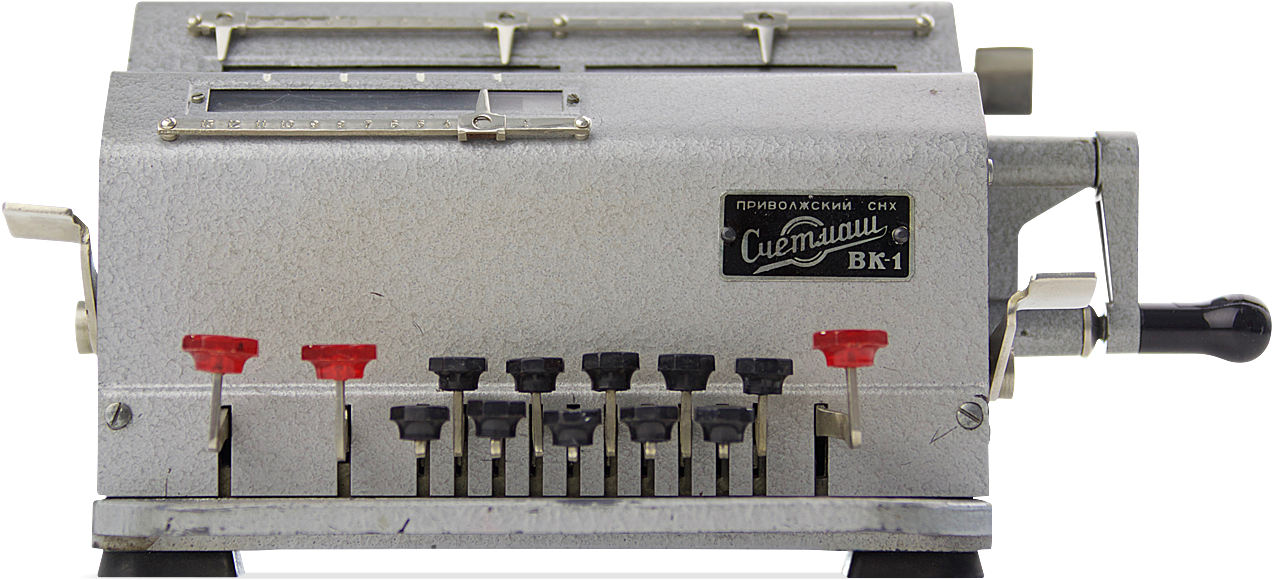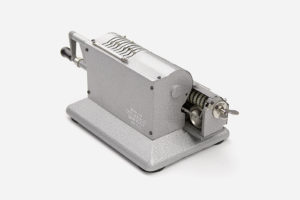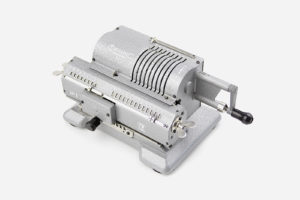
The setting plate consisting of toothed washers (with a varying number of teeth) assembled around a common axis in the shape of a cylinder is located within the fixed frame of the machine.
The machine box has 9 slots featuring setting slides (117), which are used to input numbers for calculation.
The horizontal row of digits over the slots ranging from 1 to 9 indicates the position of input numbers; the point sign, or position indicator (51), is located further up the line.
The result (301) and the revolution (3) counters are placed inside a movable carriage (3).
Just above the rectangular slots of the carriage lid there are two horizontal lines of digits indicating the position of numbers provided by the counter and the wheel, whereas below the rectangular slots there is a line with movable points, i. e. the position indicators (51).
Performance: 115 operations per hour for the multiplication of five-digit numbers by four-digit ones, and 85 operations per hour for the division of five-digit numbers by four-digit ones
Weight — 3.5 kg. Size — 275✕165✕132 mm.




